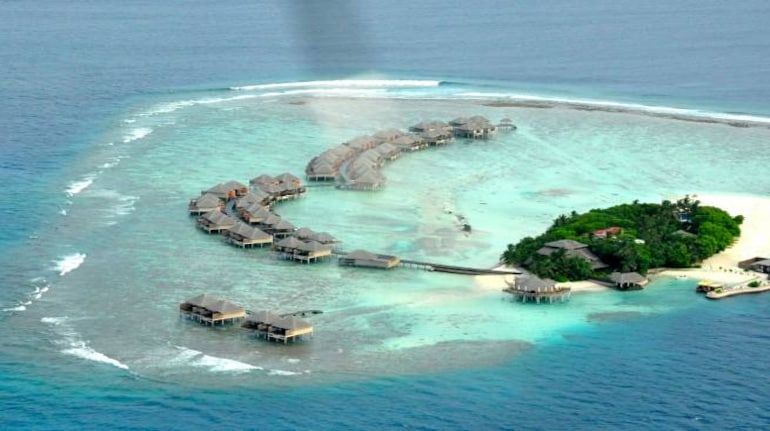



Maldivian President Mohamed Muizzu has asked India to withdraw its military personnel deployed in the Indian Ocean archipelago by March 15. In response, New Delhi said the two sides would hold further discussions on the matter.
Also read: Maldives says India has agreed to 'expedite withdrawal of Indian military personnel'
"Indian military personnel cannot stay in the Maldives. This is the policy of President Dr Mohamed Muizzu and that of this administration," Abdulla Nazim Ibrahim, the public policy secretary at the President's Office, said on January 14.
After being sworn in as President, Muizzu had said he would ensure that the island nation "has no foreign military presence on its soil".
However, the "India Out" campaign had been launched in 2020 with on-ground protests in the Maldives and quickly moved to social media platforms. Protesters claimed that the Maldivian Democratic Party government led by then President Ibrahim Solih had "sold out" the Maldives to India.
But why does the Maldives want Indian troops out? Also, how many Indian army personnel are stationed in the island nation and why? Moneycontrol explains.
Indian army assets in the island nation
The Maldives, home to about 500,000 people, has become a geopolitical hotspot amid the growing strategic significance of the Indian Ocean region and border tensions between India and China.
There are 88 Indian military personnel in the Maldives.
Also read: India should be alert about proximity of Maldives to China: Shashi Tharoor
Why are Indian troops in the Maldives?
Indian soldiers have been sent to the Maldives at various points over the years to train Maldivian troops. According to a report by The Hindustan Times, India has crews and technicians for its patrol vessel, Dornier aircraft and two helicopters. These are adorned in Maldivian colours and are deployed for purposes such as medical evacuation, surveillance, and air-rescue operations.
Indian army assets have played key roles in humanitarian missions in the Maldives.
India was among the nations that recognised the Maldives' after it got freedom from British rule in 1965. However, Indian troops entered the island for a military operation only in 1988 to prevent a coup.
A group of Maldivians led by businessman Abdullah Luthufi, along with Sri Lankan militants from the People's Liberation Organisation of Tamil Eelam, sought to overthrow the regime of then President Maumoon Abdul Gayoom in November 1988.
The Indian government led by then Prime Minister Rajiv Gandhi launched a meticulously coordinated military operation that involved all three wings of the armed forces and managed to secure the President and capture the rebels.
Gayoom thanked Rajiv Gandhi and requested that the Commanding Officer 6 PARA and essential troops stay on in the capital Male to train and reorganise his security forces. This marked the beginning of the India-Maldives cooperation in defence.
Factors behind suspicion against India
According to experts, the "India Out" campaign exaggerated the role of Indian soldiers in the island nation and hinted at their presence as a threat to the nation's security. However, anti-India sentiment had started to build up when Abdulla Yameen Abdul Gayoom of the Progressive Party (PPM), with a pro-China tilt, became president in 2013.
India gave two Dhruv advanced light helicopters to the Maldives in 2010 and 2015. Both were used for ocean search-and-rescue operations, maritime weather surveillance and for airlifting patients between islands.
"These helicopters were for humanitarian purposes only, but some in the anti-India constituency, particularly Yameen's party PPM, were trying to portray that by gifting these helicopters, India was creating military presence in the country because they were military choppers," Gulbin Sultana, a research analyst at the Manohar Parrikar Institute for Defence Studies and Analyses, whose area of research includes the Maldives, told Indian Express in 2021.
An additional factor was that the Solih government was not transparent about its dealings with India, notably the UTF Harbour Project agreement signed between India and the Maldives in February 2021.
India had to develop and maintain the project at Uthuru Tilefish, a strategically located atoll near the capital Male. Sections of the Maldivian media speculated that the UTF project would be turned into an Indian naval base.
However, Major-General Abdulla Shamaal, the then Maldivian chief of defence forces, clarified that India would provide grant assistance for the project and there were no plans for an Indian naval base in the country.
Muizzu succeeded Solih, whose tenure saw a boost in ties between the island nation and New Delhi.
Driving away the Indian troops was among the pre-poll promises Muizzu made during his election campaign. His main theme was about an alleged threat to the Maldives' sovereignty by some Indian military personnel.
Discover the latest Business News, Sensex, and Nifty updates. Obtain Personal Finance insights, tax queries, and expert opinions on Moneycontrol or download the Moneycontrol App to stay updated!
Find the best of Al News in one place, specially curated for you every weekend.
Stay on top of the latest tech trends and biggest startup news.